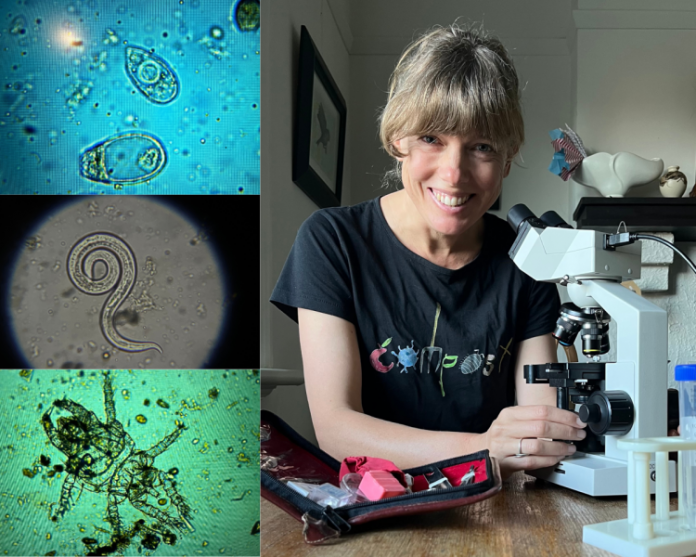
For the past couple of weeks we have celebrated the impressive skills of the bacteria and fungi in our compost piles. We have looked at how they each work away at decomposing their specific, and quite different, dietary preferences, incorporating the nutrients they access into their microscopic bodies.
So how do our plants get access to all these lovely nutrients?
It’s now time to introduce some other members of the soil food web, or in the words of Caesar Flickerman ‘let the Hunger Games begin’…
Protozoa are single-celled organisms like bacteria but, while still microscopic, are much, much bigger. Watching these little critters under the microscope is quite entertaining: observing the blobby, naked amoeba slowly oozing its way along, or marvelling over the beautiful testate amoeba who build intricate protective casings around them from the minerals in the soil. Or watching cute little flagellates bubbling along while ciliates zip by, so fast they’re known as the racing cars of the soil. Importantly, each of these protozoa eat approximately 10,000 bacteria a day!
Other essential players are the microscopic worms called nematodes. Some species of nematodes eat bacteria, others prefer fungi, still others eat other nematodes! A few nematodes do nibble on roots which have given these little critters a bad name, but most of them are very beneficial, which is probably the reason why they are the most numerous multicellular organisms on the planet!
So what do they all have in common?
They eat and they poo. And when they poo, they release all the excess nutrients stored up in those juicy little bacteria. Now, these nutrients are in a plant-available form, a form that plants can easily take up and use. But it doesn’t stop there; something bigger comes along, like a water bear or a springtail and eats them!
It is this process of nutrient cycling, eating, being eaten, and pooing out excess nutrients that makes our compost so nutritious for our veggies and our fruit trees. As a composter, we are part of this process too. We recycle nutrients from our kitchen and our garden and give them to our microbes to continue this process at a microscopic level, all in our humble backyard compost piles.
So, as you can see, it’s a nematode eat nematode world down there, all to the benefit of us and our plants. If you would like to see some of these microbes under the microscope, captured on video from some of our YIMBY* compost, then visit our website: yimbycompost.com
And remember, all these microbes need water to survive. The weather has certainly heated up over the last couple of weeks so be sure to keep your compost nice and moist.
Next week we will look at that ashy white-looking stuff that we sometimes see when we dig into our compost. What is it and what is it telling us?
– Mikaela Beckley works with Yes In My Back Yard, (YIMBY*), a community-scale composting initiative in Castlemaine and surrounds. Send questions or comments to hello@yimbycompost.com







